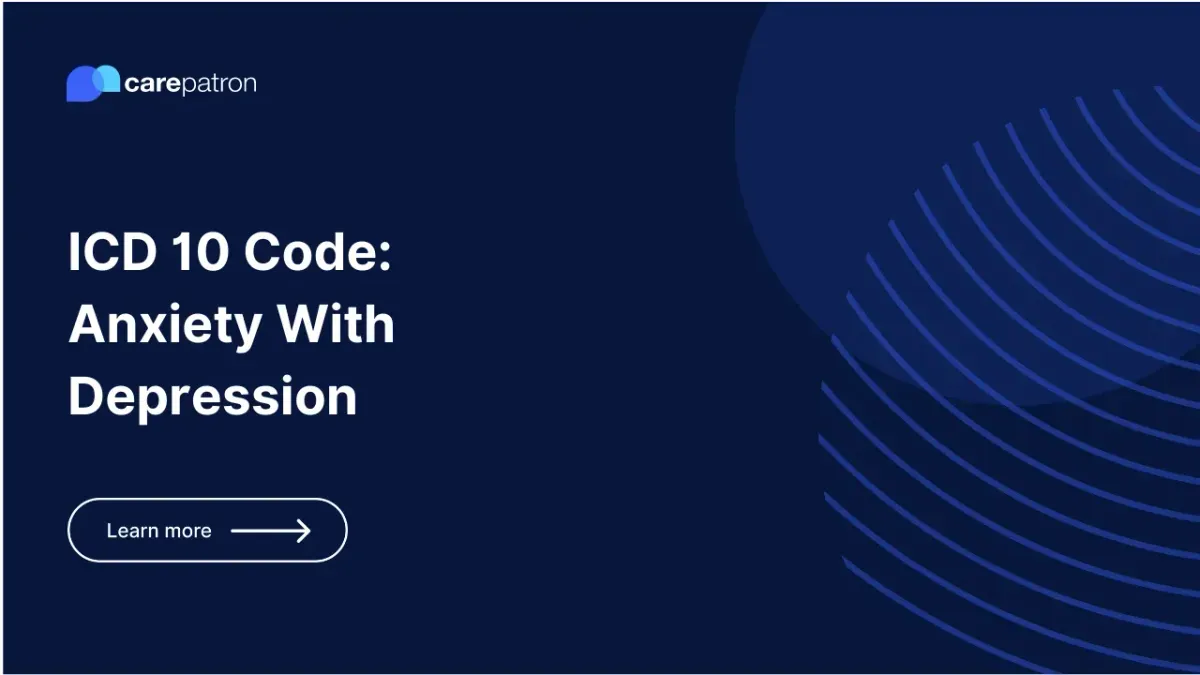
Anxiety With Depression ICD-10-CM Codes
Learn about ICD-10 codes used for anxiety and depression. These codes help in effective treatment planning and accurate health insurance billing.
Use Code
Commonly asked questions
Use these ICD-10 codes when a patient presents symptoms of both anxiety and depression, but neither is predominant or severe enough to justify separate diagnoses.
Treatment commonly includes a combination of psychotherapy and medications. Lifestyle adjustments can also help manage symptoms.
A diagnosis code for anxiety with depression signifies a clinical diagnosis of both conditions, which is essential for the effective treatment and billing of these conditions.
EHR and practice management software
Get started for free
*No credit card required
Free
$0/usd
Unlimited clients
Telehealth
1GB of storage
Client portal text
Automated billing and online payments
